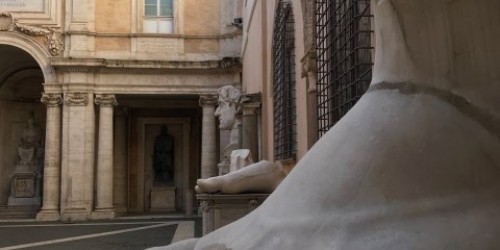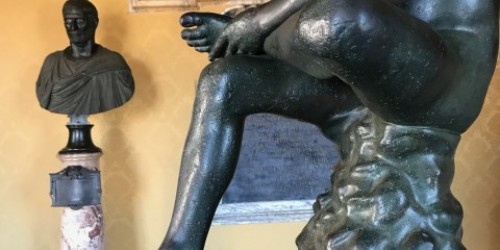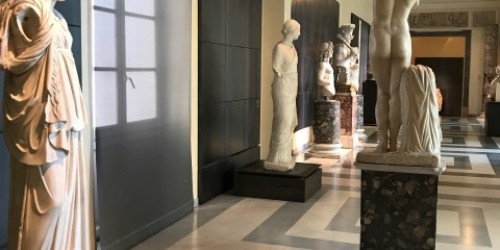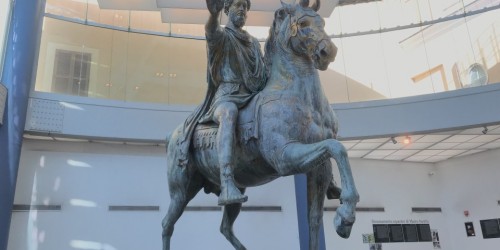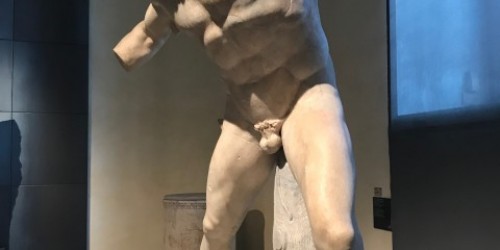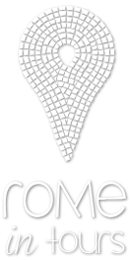
 Rome in Tours
Rome in Tours

Tours
Fountain & Squares
Piazza Venezia, the Capitoline Hill and Museums
From the glory of a city to the identity of a nation
- Avoid the crowd
- Duration
- 3,5 hours
- Meeting Point
- Piazza Venezia, in front of the Vittoriano
- Included
- ticket fees, radios and earpieces for 6 pax or more
- Not Included
- food, beverages and taxi transfer unless otherwise specified
- Tips
- wear comfortable shoes and hat on summer
- Sites Visited
Piazza Venezia, the Capitoline Hill and the homonymous museums
What to expect
This tour is meant to ideally connect the mythical origins of Rome as a village of shepherds and farmers, with the capital of a modern country. It is the best way for you to realize why we chose this city as a capital and how Rome, better than any other italian city, deserves this role and expresses our cultural identity.
So, no better place to start than Piazza Venezia, one of the most symbolic places for many reasons, among them, you'll see the balcony where Mussolini made his famous speech declaring war to Poland in 1939 which for the italians meant the beginning of WWII. Venice square is the geographic center of the city, point of convergence of the main city road axes and where history left its unmistakable proof and impact. From the Column of Trajan of the early II century AD, to the Renaissance Palazzo Venezia, giving the name to the square, the XVIII century church of the Most Holy Name of Mary, the Palazzo Bonaparte, where Napoleon's mother lived in the early XIX century, Palazzo delle Assicurazioni Generali of the early XX century including the house where Michelangelo lived and died. Last but not least, the monument that best defines the architecture of the square, the building rising solemnly and majestically to remember Victor Emmanuel II, the king when Italy was unified as a country in 1861. The Vittoriano, the official name but better known as "the wedding cake" because of its statues in bronze on top, is also the memorial of the unknown victims of WWI, a museum and the Altar of the Forefathers.
Once you'll be dazed by the defeaning echo of history, there won't be time to get distracted as you'll start hearing the glory call of Rome! A staircase will head us, in fact, to the top of the magnificent Capitoline Hill and square, considered as a sort of an acropolis by the romans, included in the city walls since the age of Romulus, hosting the biggest and most important temple of the city, the one of Jupiter, Juno and Minerva, whose foundations are still preserved. During the late Republic, the eastern side of the hill became the seat of the ancient state archive of the city, the Tabularium, dating back to 78 BC. and in an ideal continuity between past and present, right on top of it the nowadays mayor's office!
To further enrich the already remarkable mosaic of history, if you think it is not enough to join us on this tour, we have our ace in the sleeve, Michelangelo! There's his hand behind the current arrangement of the Capitoline hill square. A project commissioned by the Pope Paul III who wanted the same artist to paint the Last Judgement in the Sistine Chapel.
Our walk will then procede towards what is considered the first museum of the world. The Musei Capitolini were born in 1471, when Sixtus IV, the Pope who started the project of the Sistine Chapel, donated a collection of bronze statues to the citizens. These works of art were chosen because of their deep connection with the city of Rome and its glory and located at the Campidoglio, the center of the religious and political life. Among the masterpieces, we won't miss the statues of the Shewolf with the two twins Romulus and Remus and Marcus Aurelius.
Additional info and suggestions
Tours don't run for site closure on January 1, May 1, December 25
COVID-19 REQUIREMENTS
To access the Vatican Museums it is mandatory to wear a mask to cover nose and mouth. The mask should be worn for the entire duration of the visit
Each visitor will be subjected to the mandatory control of body temperature. Access will be denied to all those who will have a body temperature equal to or more than 37.5 º
